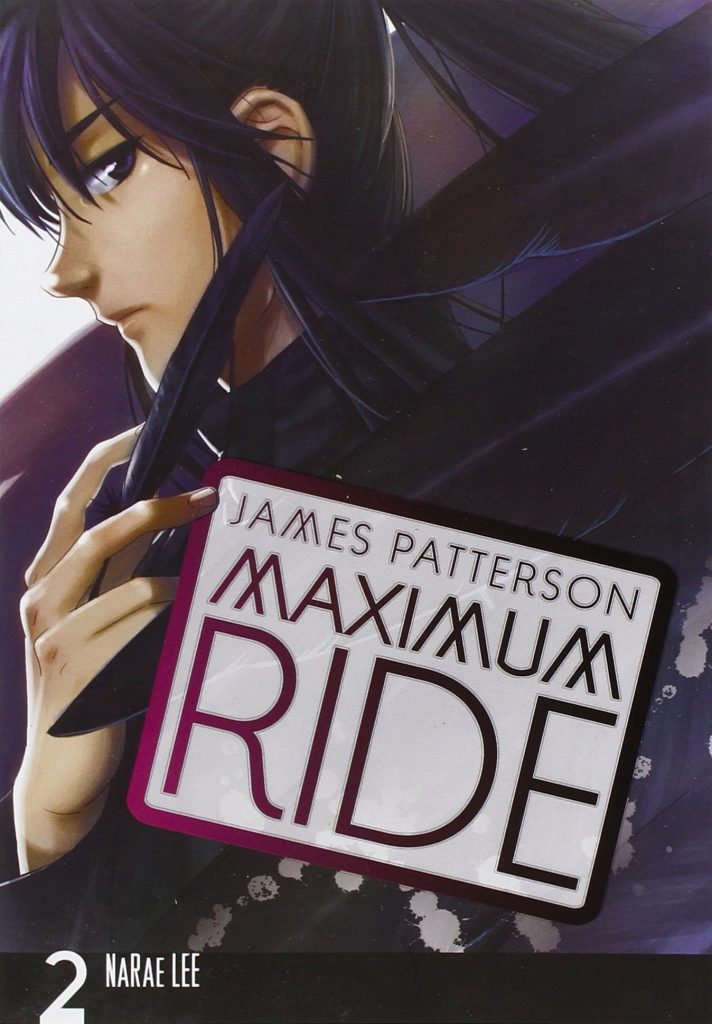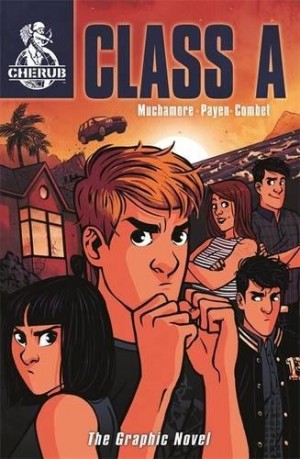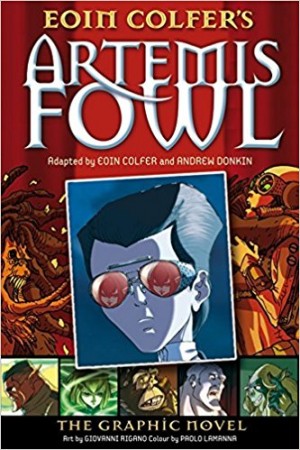Review by Frank Plowright
This volume concludes NaRae Lee’s adaptation of the first Maximum Ride young adult novel The Angel Experiment. Anyone who’s read the opening volume has met Max, Angel, Fang, Gasman, Iggy and Nudge, seen them flying, learned a sinister institute calling itself a school experimented on them and others, and saw them recaptured by that organisation. A bombshell ending had Max told her destiny is to save the world. In case there’s any concern about strange names, these were chosen by the children themselves who’re largely unaware of their real identities.
A few colour pages open each volume, which are afterwards all in black and white, and there’s a rapid change of circumstances as the group escape. However, a pertinent piece of information Max learns is she has a tracking chip in her arm, and it’s so well bonded that removing it could mean she loses the use of her hand. It means that as they arrive in New York, agents of the Institute are already waiting for them. It occurs that perhaps those agents wouldn’t be so conspicuous were they not the only people walking around Central Park in black suits and shades. The other problem is Max having intense pains in her head. The way that develops is interesting as James Patterson’s plot again references the X-Men, but the equivalent of Professor X projecting thoughts is an altogether more random personality.
Lee’s art is interesting. For the most part it uses manga techniques, but with concessions for English language audiences such as supplying more detailed backgrounds to the pages and toning down the massive eyes, although there is a good contradiction of that toward the end. In some places the action isn’t as clear as it might be, but the characters are well defined. In terms of the plot three of the six followed are definitely given more attention than the other three, who’re present, sometimes have some dialogue, but are as yet undeveloped. However, there are few small surprises on that score, rounding out the cast.
From the mystery of how the group are winged, we’re led to other discoveries as surely as Max is led by the voice in her head, whose intentions may yet prove to be malign. While it does make for a more interesting story as rolled out, looking at matters logically, if one wanted to influence a teenage girl conscious of her responsibility to others, then being capricious and enigmatic isn’t the surest path. Still, much remains to be revealed, and much of what is revealed here is of interest in building a bigger picture.
As per a couple of comments above, the logic behind the plot can be prodded at, with other examples not pointed out, so enjoyment of Maximum Ride to some extent depends on a reader’s ability to flow with the dramatic license in the interest of greater thrills. To be fair to Patterson, though, some of the more obvious questions raised are dealt with in subsequent books, including the matter of the voice in Max’s head.
School’s Out – Forever is the title of the second Maximum Ride novel, and the adaptation of that begins in Maximum Ride 3.





